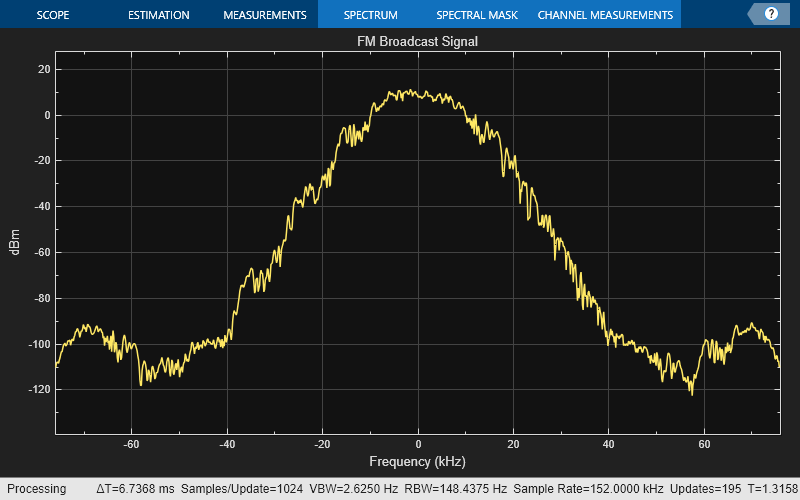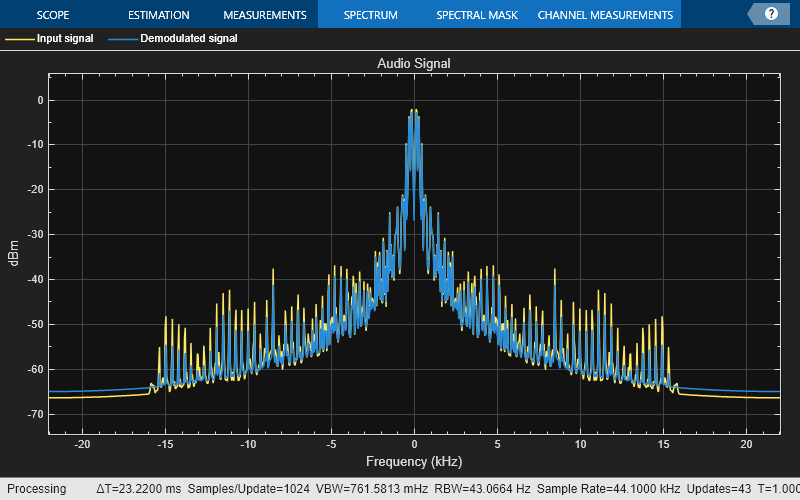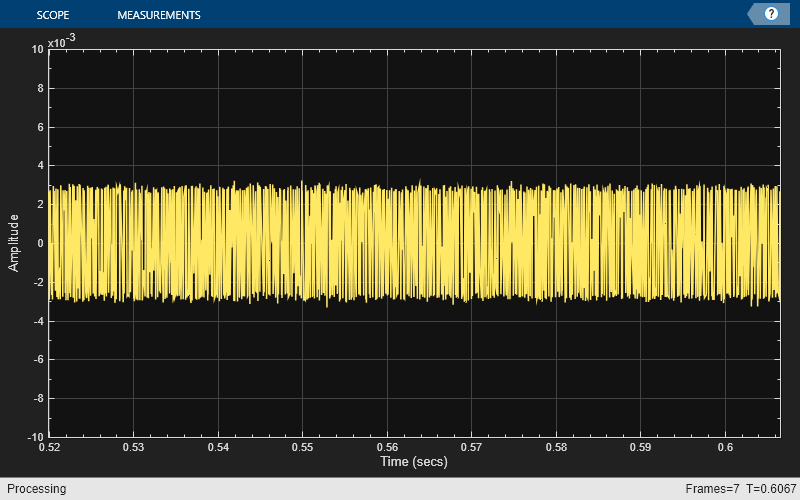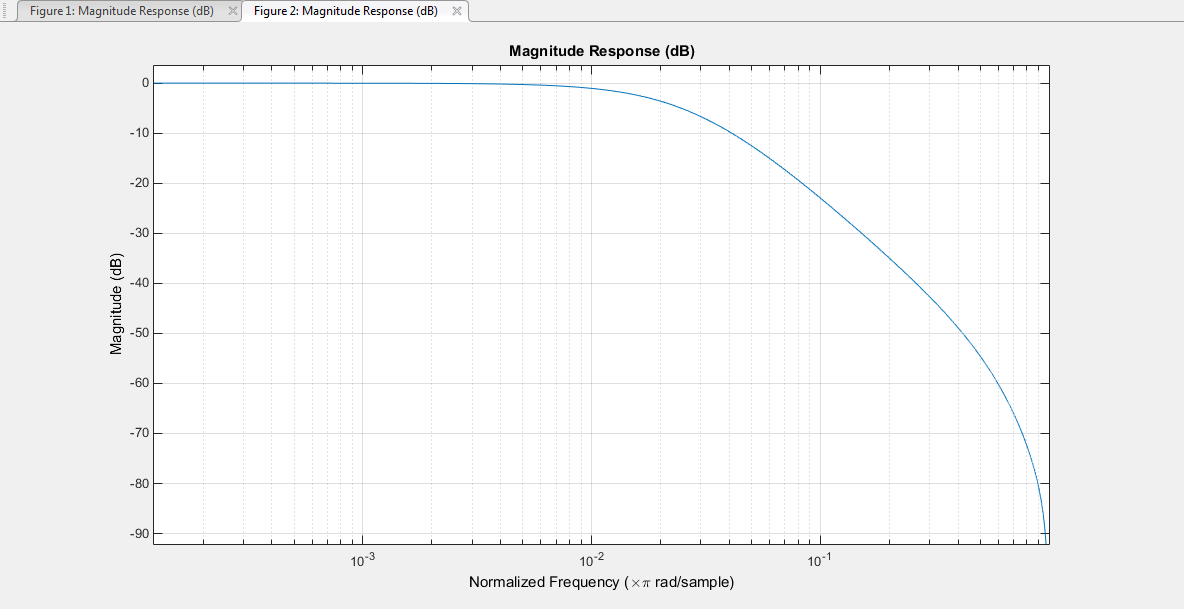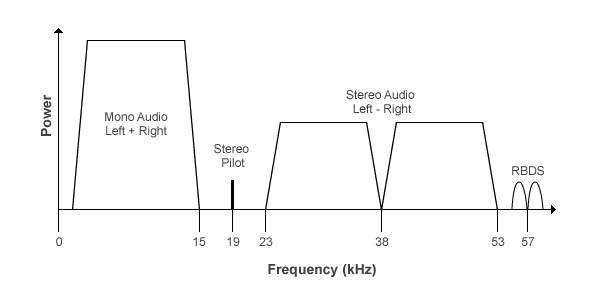comm.FMBroadcastModulator
Modulate broadcast FM audio signal
Description
The comm.FMBroadcastModulator
System object™ pre-emphasizes an audio signal and modulates it onto a
baseband FM signal. For more information, see Algorithms.
To modulate a broadcast FM audio signal:
Create the
comm.FMBroadcastModulatorobject and set its properties.Call the object with arguments, as if it were a function.
To learn more about how System objects work, see What Are System Objects?
Creation
Syntax
Description
fmbmodulator = comm.FMBroadcastModulator
fmbmodulator = comm.FMBroadcastModulator(Name,Value)'SampleRate',400e3 specifies a sample rate of 400 kHz.
fmbmodulator = comm.FMBroadcastModulator(fmbdemodulator)comm.FMBroadcastDemodulator
System object, fmbdemodulator.
Properties
Usage
Description
Input Arguments
Output Arguments
Object Functions
To use an object function, specify the
System object as the first input argument. For
example, to release system resources of a System object named obj, use
this syntax:
release(obj)
Examples
Limitations
If you set the
RBDStotrue, both the audio and RDS (or RBDS) inputs must satisfy this equation.The RDS (or RBDS) signal sample rate is
RBDSSamplesPerSymbol×1187.5Hz.The length of the input RDS (or RBDS) signal,
rbdssig, must be an integer multiple of theRBDSDecimationFactorproperty. The input length of the audio signal,audiosig, must be an integer multiple of theAudioDecimationFactorproperty. For more information onRBDSDecimationFactorandAudioDecimationFactor, see theinfoobject function.
Algorithms
References
[1] Hatai, I., and I. Chakrabarti. “A New High-Performance Digital FM Modulator and Demodulator for Software-Defined Radio and Its FPGA Implementation.” International Journal of Reconfigurable Computing (December 25, 2011): 1–10. https://doi.org/10.1155/2011/342532.
[2] Taub, H., and D. Schilling. Principles of Communication Systems. McGraw-Hill Series in Electrical Engineering, 142–55. New York: McGraw-Hill, 1971.
[3] Der, Lawrence. "Frequency Modulation (FM) Tutorial." Silicon Laboratories Inc.: 4–8.
Extended Capabilities
Version History
Introduced in R2015a
